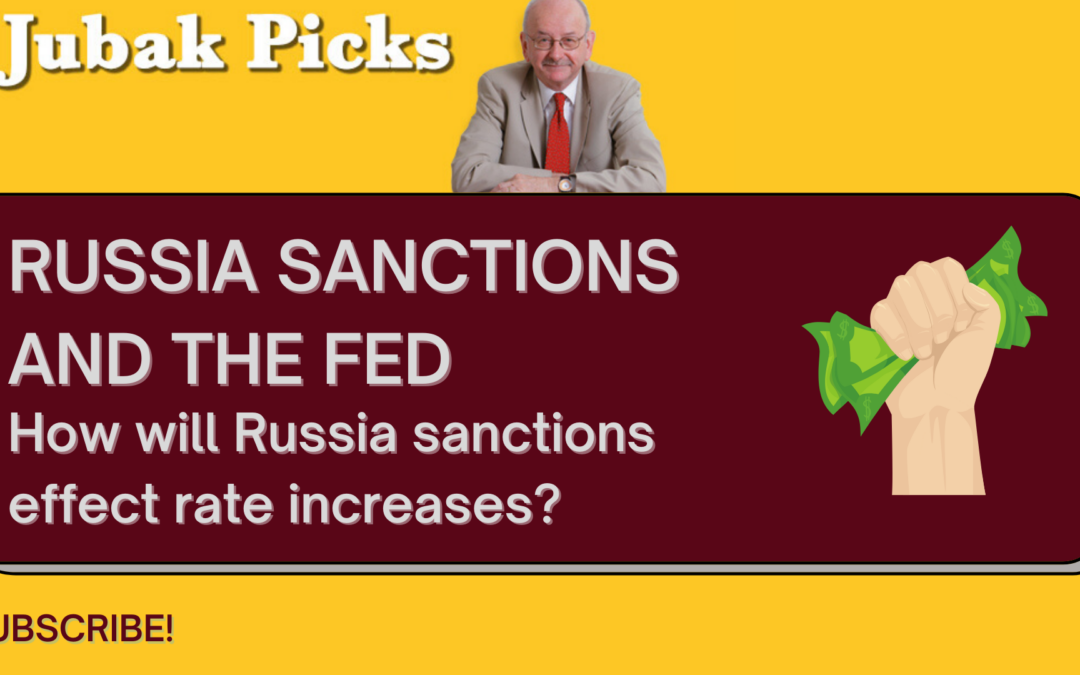Morning Briefing

February 28, 2022 | Daily JAM, Morning Briefing |
As everyone expects, the Fed will raise interest rates at its March 16 meeting. And signal that more increases are to come.But the case is very different for the Fed’s announced plans to end in March its purchases of Treasuries and mortgage-backed assets (the program call Quantitive Easing that was designed to stimulate the economy) and plans to start shrinking its balance sheet by not buying new bonds as holdings in its portfolio mature. Now, I think, the war of financial sanctions that has become a crucial battlefield after Russia’s invasion of Ukraine says that maybe this is exactly the wrong time to take liquidity out of global financial markets.

February 27, 2022 | Daily JAM, Morning Briefing |
The decision by Western allies to cut off some Russian banks from access to the SWIFT system that banks use to settle accounts amongst themselves will result in missed payments and giant overdrafts within the international banking system, and spur monetary authorities to reactivate daily operations to supply the market, according to Credit Suisse Group AG strategist Zoltan Pozsar. In his note to clients Pozsar draws comparisons with the 2008 failure and the March 2020 market liquidity seizures as a result of the Pandemic.

February 24, 2022 | CRWD, Daily JAM, DAL, EQNR, Jubak Picks, LNG, Millennial, Morning Briefing, PXD, Top 50 Stocks |
With the Russian invasion of Ukraine about to trigger another package of tougher U.S. and European sanctions, I think we can expect Russia to delver on Vladimir Putin’s promise of retaliation. The most obvious form of that will be cyberattacks on U.S. infrastructure, like the Colonial Pipeline attack, on U.S. financial systems through hacking to steal customer information and denial of service attacks, and on attacks to break into U.S. corporate networks to either paralyze those networks or to effectively put them off line. I wouldn’t rule out attacks on government infrastructure either at local, state, and national levels.

February 23, 2022 | Daily JAM, Morning Briefing, Videos |
I’m starting up my videos on JubakAM.com again–this time using YouTube as a platform. My one-hundredth-and fifth YouTube video “Russia sanctions and the Federal Reserve’s interest rate increases” went up today. So how will the seemingly imminent confrontation between the United States and Russia over the fate of Ukraine, and the likelihood of continuing economic sanctions against Russia change the prospects for interest rate increases by the Fed in the coming months. Ya think that the prospect of sanctions on Russia and possible Russian cyberattacks might change the Fed’s schedule?

February 22, 2022 | Daily JAM, Morning Briefing |
Tuesday night, February 22, Russian President Vladimir Putin said that Russia backs the full territorial claims of separatists in eastern Ukraine. Speaking at a press conference, Putin said: “We recognized them. And this means that we recognized all their fundamental documents, including the constitution. And the constitution spells out the borders within the Donetsk and Luhansk regions at the time when they were part of Ukraine.” Leaders in the breakaway states control less than half of the Donetsk and Luhansk regions of eastern Ukraine but claim sovereignty over the entire area, including major city of Mariupol.

February 22, 2022 | Daily JAM, Morning Briefing |
Today, stocks fell but not a huge amount on uncertainty about exactly what sanctions the United States and the countries of Europe will impose on Russia. So far, the reaction seems to be one of “disappointment” that the announced sanctions aren’t bigger.

February 21, 2022 | Daily JAM, Morning Briefing |
The personal consumption expenditures (PCE) price index, the inflation index that the Federal Reserve uses, is projected at an annual rate of 6% in January, according to economists surveyed by Bloomberg. The core rate, which excludes food and fuels, is forecast to climb to an annualized 5.2%.

February 21, 2022 | Daily JAM, Morning Briefing |
The themes should be familiar by now. The Chinese government’s crackdown on the country’s big tech companies continues. And there’s new bad news from a company thought to be safe from the real estate crisis.

February 18, 2022 | Daily JAM, Morning Briefing, Short Term |
If you believe as I do that one of Russian President Vladimir Putin’s goals in igniting the current conflict in Ukraine was to attempt to use Europe’s dependency on Russia natural gas to drive a wedge among NATO members, the most recent developments make a great deal of sense. And we look like we’re on the road to a major escalation of the conflict in the Ukraine.

February 17, 2022 | Daily JAM, Morning Briefing |
New jobless claims rose last week, ending a three-week streak of improvements. For the week ended Feburary 12, workers filed 248,000 initial claims for unemployment. Economists surveyed by Bloomberg were expecting 218,000 new claims. In the prior week workers filed a revised 225,000 claims.

February 15, 2022 | Daily JAM, Morning Briefing |
Today what counts in the market is Vladimir Putin’s intentions. Jerome Powell? Maybe tomorrow. And that’s in spite of a jump in producer prices, which usually translates not consumer inflation.

February 14, 2022 | Daily JAM, Morning Briefing, Short Term |
This could lead the Federal Reserve to move more cautiously on raising interest rates, say, a 25 basis point increase rather than 50 at the central bank’s March 16 meeting. If, that is, you think any piece data is likely to change the Fed’s mind. U.S. consumers lowered their expectations for future inflation in January, according to a survey by the Federal Reserve Bank of New York. The median expectation for inflation one year from now fell in this survey for the first time since October 2020, to 5.8% from the 7.5% current inflation rate.











